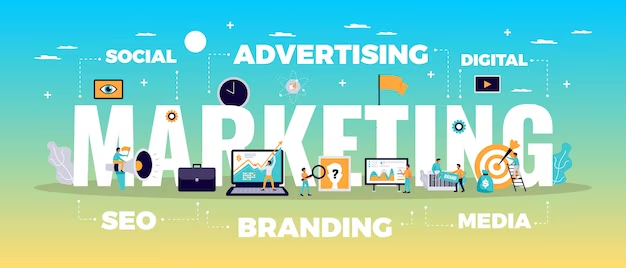SCO marketing is a holistic approach to online marketing that combines three essential elements. Search, conversion, and optimization. SCO marketing aims to attract, engage, and convert your website visitors into loyal customers. It can help you improve your website performance, user experience, and business growth. But how do you implement SCO marketing? Here are some tips and strategies that you can follow.
What is SCO Marketing?

SCO marketing stands for search, conversion, and optimization marketing. It is a comprehensive and integrated online marketing strategy that focuses on three aspects of your website:
- Search: Search refers to the process of making your website visible and relevant to your target audience and search engines. Search involves optimizing your website for keywords, content, technical aspects, and off-page factors that affect your website’s ranking and traffic.
- Conversion: Conversion refers to the process of turning your website visitors into leads, customers, or subscribers. It involves designing your website for user experience, usability, and persuasion. Conversion also involves creating and testing landing pages, forms, calls to action, and other elements that encourage your visitors to take action on your website.
- Optimization: Optimization refers to the process of improving your website’s performance, quality, and efficiency. It involves monitoring and analyzing your website’s data, metrics, and feedback. It also involves implementing and experimenting with changes and improvements that can enhance your website’s results and outcomes.
SCO marketing is a continuous process that requires constant attention and improvement. By applying it to your website, you can achieve the following benefits:
Increase Your Website’s Visibility and Authority
You can increase your website’s exposure and credibility to your target market and industry. You can also increase your website’s traffic and reach by ranking higher on search results pages. Which can result in attracting more organic visitors.
Increase Your Website’s Engagement and Retention
You can increase your website’s interaction and involvement with your visitors. You can also increase your website’s retention by providing a positive user experience. And offering value and benefits to your visitors.
Increase Your Website’s Conversion and Revenue
By optimizing your website for optimization, you can increase your website’s conversion and revenue by turning more visitors into customers and subscribers. You can also increase your website’s profitability and ROI by reducing your costs and increasing your efficiency.
How to Implement SCO Marketing?

SCO marketing is not a one-size-fits-all solution. But, a customized and tailored strategy that depends on your website’s goals, needs, and challenges. However, there are some general steps and best practices that you can follow to implement SCO marketing effectively. Here are some of them:
Step 1: Define Your SCO Marketing Goals and Objectives

The first step to SCO marketing is to define your SCO marketing goals and objectives. You need to have a clear and specific vision of what you want to achieve with your website and how you will measure your success. Some of the common SCO marketing goals and objectives are:
- Increase your website’s traffic and ranking for your target keywords and topics
- Enhance your website’s conversion rate and revenue for your target actions and offers
- Increase your website’s retention rate and loyalty for your target segments and personas
- Ascend your website’s performance and quality for your target metrics and standards
You should also align your SCO marketing goals and objectives with your overall business goals and objectives, and make sure that they are SMART: specific, measurable, achievable, relevant, and time-bound.
Step 2: Conduct Your SCO Marketing Research and Analysis

The second step is to conduct your SCO marketing research and analysis. You need to gather and evaluate data and information about your website, your market, and your competitors. Some of the common SCO marketing research and analysis methods are:
Keyword Research
Keyword research is the process of finding and selecting the most relevant and effective keywords and phrases that your target audience uses to search for your products, services, or topics. You can use tools like Google Keyword Planner, Moz Keyword Explorer, and SEMrush Keyword Magic Tool to conduct your keyword research and analysis.
Content Research
Content research is the process of finding and creating the most valuable and engaging content that your target audience needs, wants, and enjoys. You can use tools like Google Analytics, BuzzSumo, and HubSpot Content Strategy Tool to conduct your content research and analysis.
Technical Research
Technical research is the process of finding and fixing the most important and impactful technical issues and errors that affect your website’s functionality, accessibility, and security. You can use tools like Google Search Console, Screaming Frog, and GTmetrix to conduct your technical research and analysis.
Off-page Research
Off-page research is the process of finding and building the most relevant and authoritative links, citations, and mentions that enhance your website’s reputation and trustworthiness. You can use tools like Moz Link Explorer, Ahrefs Backlink Checker, and Mention to conduct your off-page research and analysis.
User Research
User research is the process of finding and understanding the most relevant and representative users and customers who visit your website and interact with your brand. You can use tools like Google Analytics, Hotjar, and SurveyMonkey to conduct your user research and analysis.
Competitor Research
Competitor research is the process of finding and analyzing the most relevant and successful competitors that offer similar or alternative products, services, or topics to your target audience. You can use tools like Google Trends, SimilarWeb, and SpyFu to conduct your competitor research and analysis.
By conducting your SCO marketing research and analysis, you can identify your website’s strengths and weaknesses, opportunities and threats, and gaps and needs. You can also gain insights and ideas that can help you improve your website’s SCO marketing strategy and tactics.
Step 3: Implement Your SCO Marketing Strategy and Tactics

The third step to SCO marketing is to implement your SCO marketing strategy and tactics. You need to apply and execute the changes and improvements that you have planned and prioritized based on your SCO marketing research and analysis. Some of the common SCO marketing strategies and tactics are:
Search Strategy and Tactics
Search strategy and tactics are the actions and methods that you use to optimize your website for search. Some of the common search strategies and tactics are:
Keyword Optimization
Keyword optimization is the process of using your target keywords and phrases strategically and naturally throughout your website’s content, meta tags, headings, images, links, and other elements.
Content Optimization
Content optimization is the process of creating and updating your website’s content to make it relevant, valuable, engaging, and fresh for your target audience and search engines.
Technical Optimization
Technical optimization is the process of improving your website’s functionality, accessibility, and security by fixing technical issues and errors, enhancing loading speed, ensuring mobile-friendliness, implementing HTTPS, and other best practices.
Off-page Optimization
Off-page optimization is the process of increasing your website’s reputation and trustworthiness by building and earning high-quality links, citations, and mentions from other relevant and authoritative websites and platforms.
Conversion Strategy and Tactics
Conversion strategy and tactics are the actions and methods that you use to optimize your website for conversion. Some of the common conversion strategies and tactics are:
User Experience Design
User experience design is the process of designing your website’s layout, structure, navigation, and appearance to make it easy, intuitive, and enjoyable for your visitors to use and explore.
Usability Testing
Usability testing is the process of testing your website’s usability and functionality by observing and collecting feedback from real or simulated users and customers.
Persuasion Techniques
Persuasion techniques are the methods and principles that you use to influence and motivate your visitors to take action on your website, such as using social proof, scarcity, urgency, reciprocity, and other psychological triggers.
Landing Page Creation
Landing page creation is the process of creating and optimizing specific web pages that are designed to capture and convert your visitors for a specific action or offer, such as signing up, downloading, or buying.
Form Optimization
Form optimization is the process of improving and simplifying your website’s forms to make them easy, clear, and appealing for your visitors to fill out and submit.
Call to Action Optimization
Call-to-action optimization is the process of improving and enhancing your website’s calls to action to make them visible, compelling, and effective for your visitors to click and follow.
Optimization Strategy and Tactics
Optimization strategy and tactics are the actions and methods that you use to optimize your website for optimization. Some of the common optimization strategies and tactics are:
- Data collection and analysis: Data collection and analysis is the process of collecting and evaluating your website’s data and metrics, such as traffic, ranking, conversion, revenue, retention, performance, and quality, using various tools and methods, such as Google Analytics, Google Search Console, and Google Optimize.
- Feedback collection and analysis: Feedback collection and analysis is the process of collecting and evaluating your website’s feedback and opinions from your users and customers, such as reviews, ratings, testimonials, comments, surveys, and polls, using various tools and methods, such as Google My Business, Yelp, Trustpilot, and Hotjar.
- Experimentation and testing: Experimentation and testing is the process of experimenting and testing your website’s changes and improvements by comparing and measuring their results and outcomes, using various tools and methods, such as A/B testing, multivariate testing, and split testing.
- Implementation and improvement: Implementation and improvement is the process of implementing and improving your website’s changes and improvements based on your data and feedback.
In Summary
SCO marketing is a powerful and effective online marketing strategy that can help you optimize your website for search, conversion, and optimization. By applying SCO marketing to your website, you can increase your website’s visibility, authority, engagement, retention, conversion, revenue, performance, and quality. You can also achieve your website’s goals and objectives, and grow your business online.
If you need professional help with your SCO marketing, you can always contact us. We are a web design services provider that specializes in creating and optimizing websites for SCO marketing.
We can help you create a stunning and efficient website that reflects your brand identity and value proposition and attracts and converts your ideal customers. Contact us today and let us help you take your SCO marketing to the next level.
FAQ
1. What is SCO Marketing?
Answer: SCO marketing stands for search, conversion, and optimization marketing. It is a comprehensive online marketing strategy that focuses on optimizing your website for search engines, improving user conversion, and continuously enhancing overall website performance.
2. How does SCO Marketing benefit my website?
Answer: SCO marketing aims to increase your website’s visibility, engagement, and conversion rates. By optimizing for search, enhancing user experience, and continuously improving, SCO marketing helps attract, engage, and convert visitors into loyal customers.
3. Why is SCO Marketing considered a holistic approach?
Answer: SCO marketing addresses three crucial elements—search, conversion, and optimization—ensuring a well-rounded and continuous process to maximize your website’s effectiveness and achieve long-term success in online marketing.
4. How do I implement SCO Marketing?
Answer: Implementing SCO marketing involves defining clear goals, conducting thorough research and analysis, and executing strategies and tactics tailored to your website’s needs. It’s a customized approach that aligns with your business objectives.
5. What are some common SCO Marketing goals?
Answer: Common SCO marketing goals include increasing website traffic and ranking, improving conversion rates and revenue, enhancing user retention and loyalty, and optimizing overall website performance.
6. What methods are used in SCO Marketing research and analysis?
Answer: SCO marketing research includes keyword research, content analysis, technical evaluation, off-page research, user research, and competitor analysis. These methods provide insights into strengths, weaknesses, opportunities, and threats related to your website.
7. What are some SCO Marketing strategies and tactics for search optimization?
Answer: Search strategy and tactics involve keyword optimization, content optimization, technical optimization, and off-page optimization. These actions aim to improve your website’s visibility and relevance on search engines.
8. What are some conversion-focused SCO Marketing strategies?
Answer: Conversion strategies include user experience design, usability testing, persuasion techniques, landing page creation, form optimization, and call-to-action optimization—all geared toward turning visitors into customers or subscribers.
9. How does SCO Marketing address website optimization?
Answer: Optimization strategies involve data and feedback collection, experimentation and testing, and implementation and improvement based on the gathered insights. This ensures ongoing enhancements to your website’s performance, quality, and efficiency.
10. Why choose professional help for SCO Marketing?
Answer: Professional assistance ensures a tailored approach to SCO marketing. If you need help implementing or optimizing your SCO strategy, a specialized web design company can create a website that aligns with your brand identity, attracts your target audience, and converts visitors effectively.

